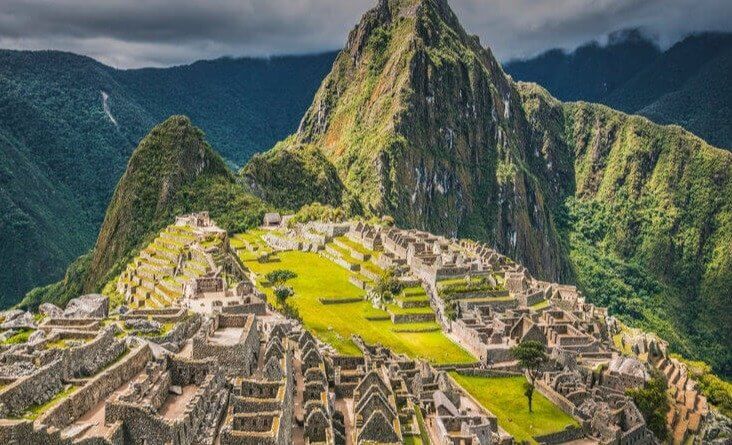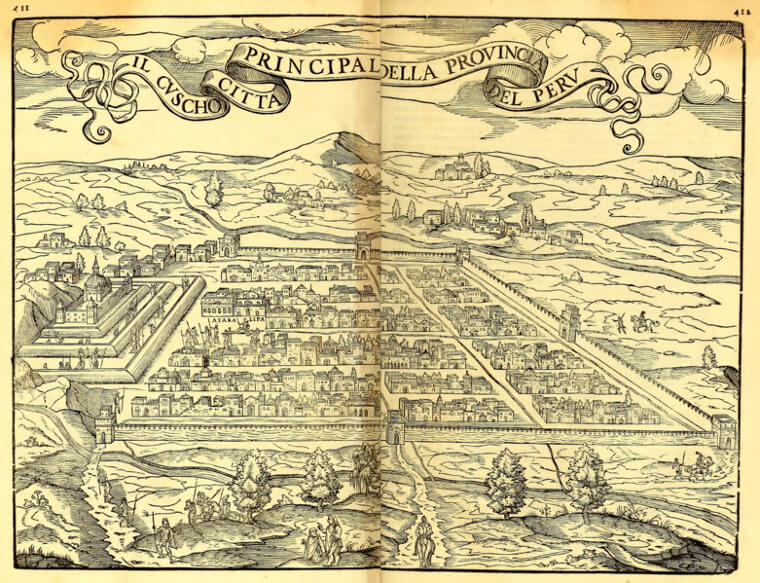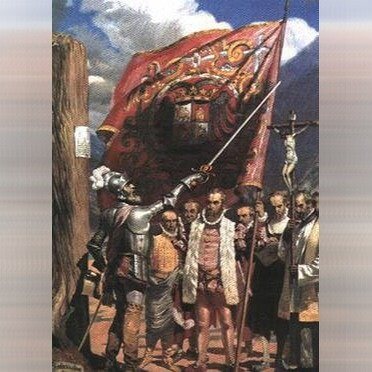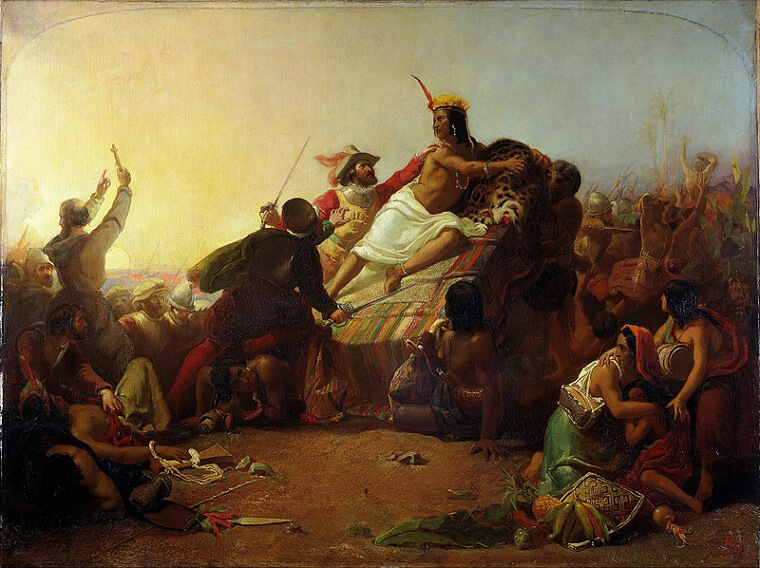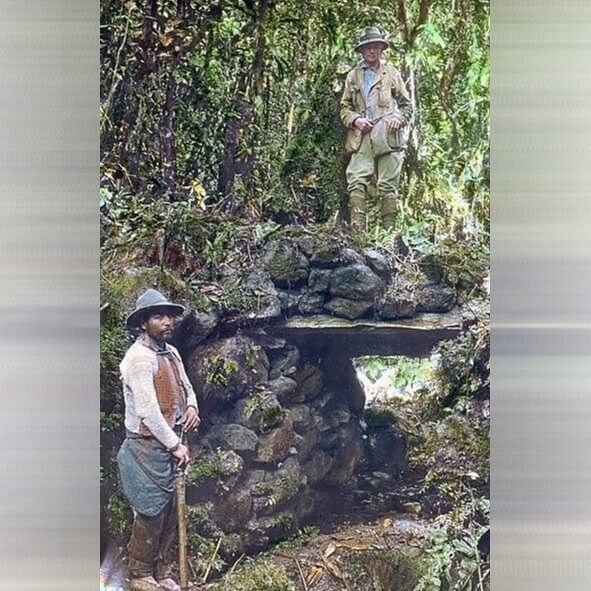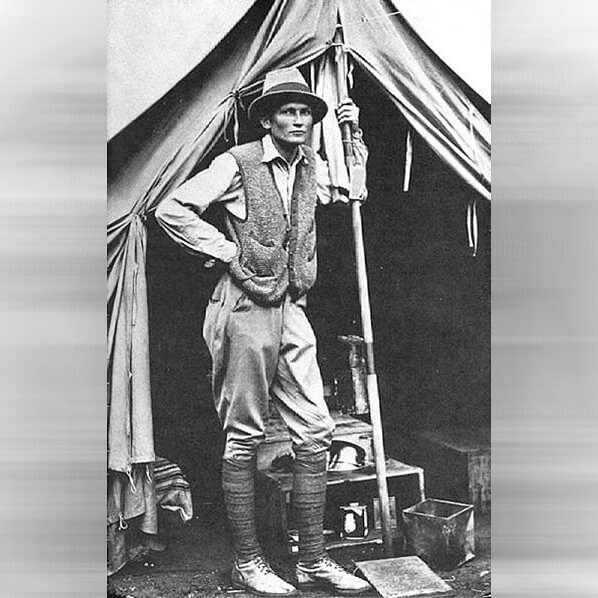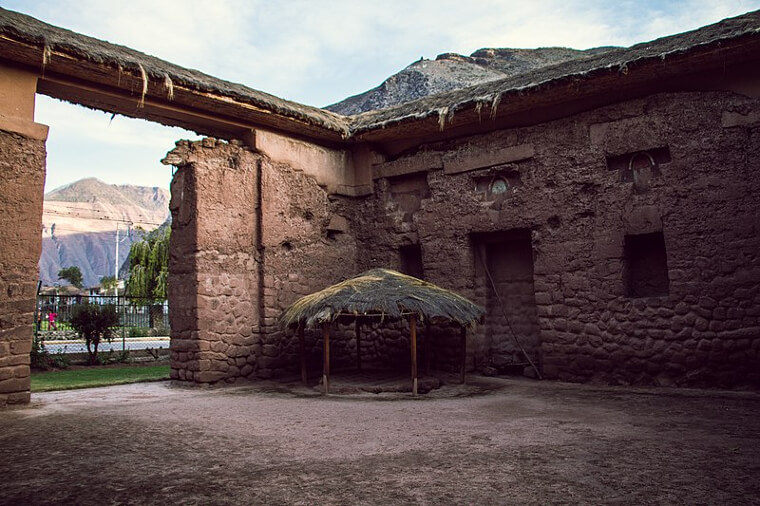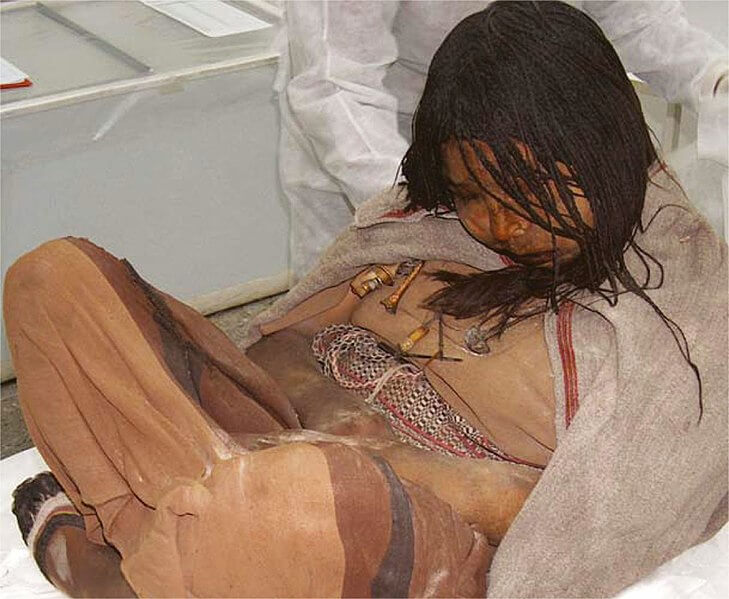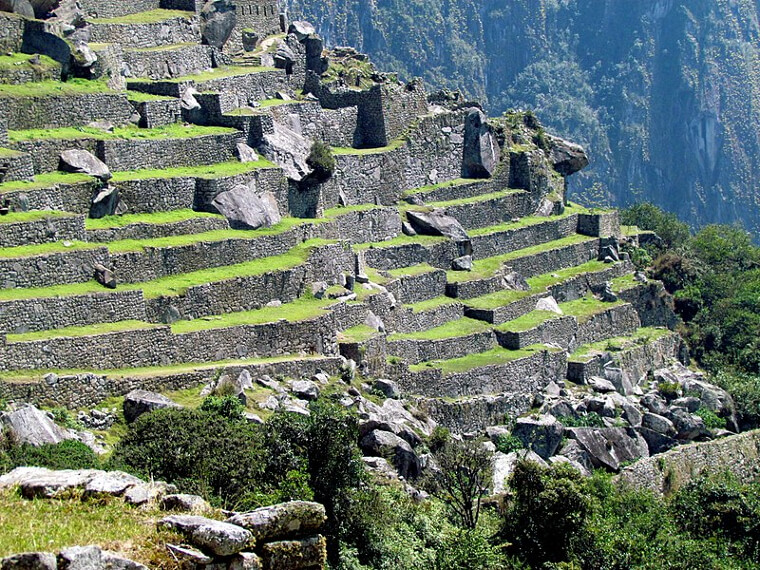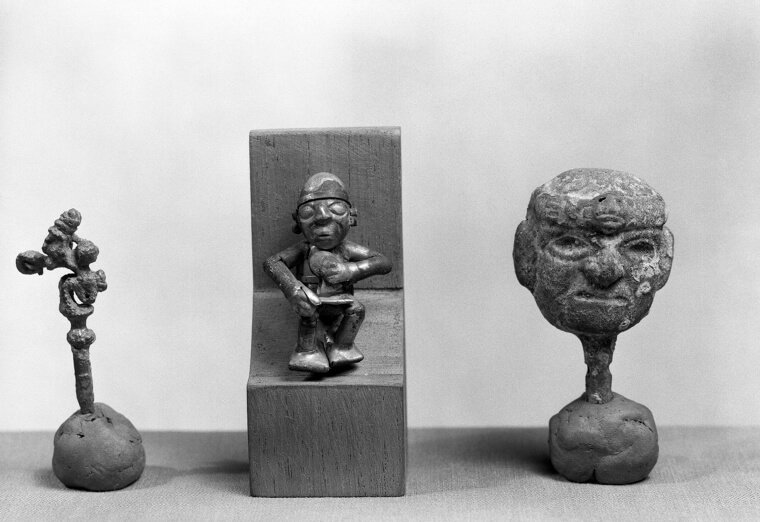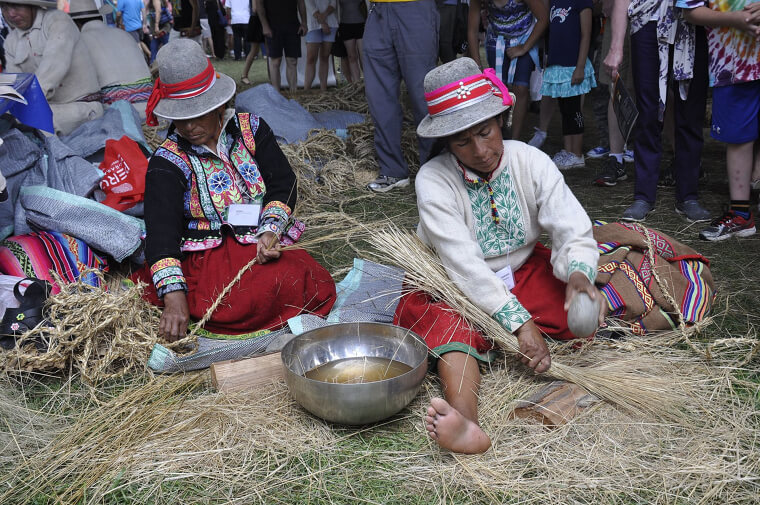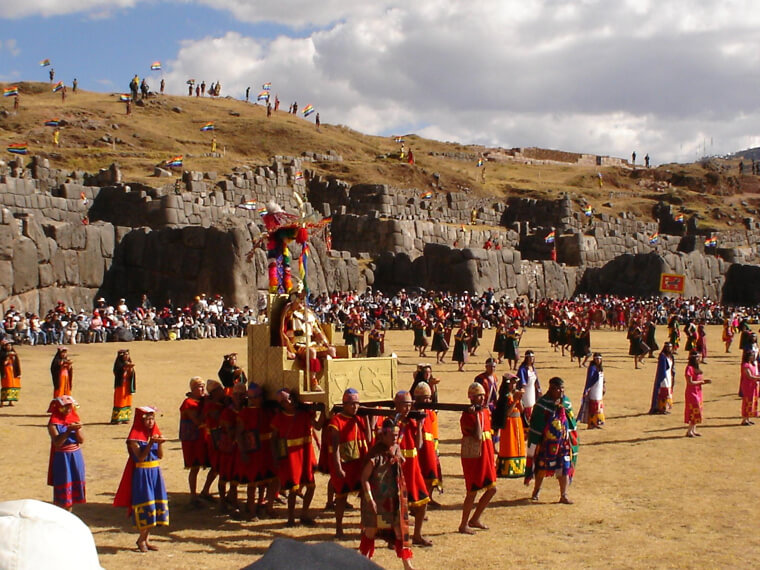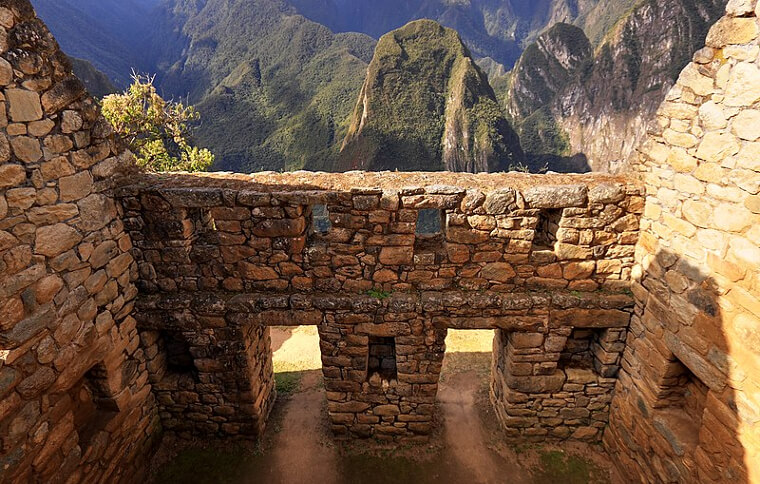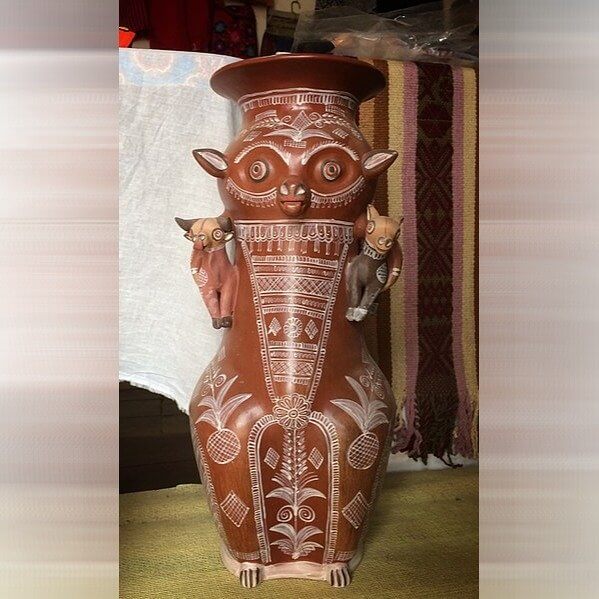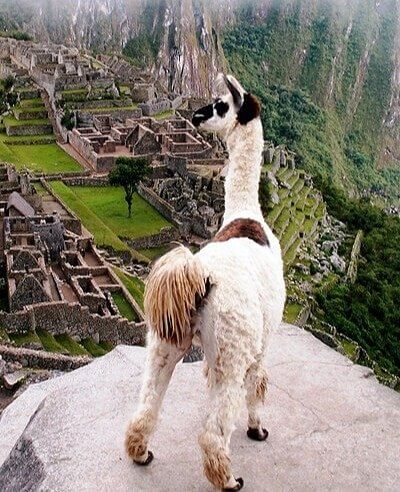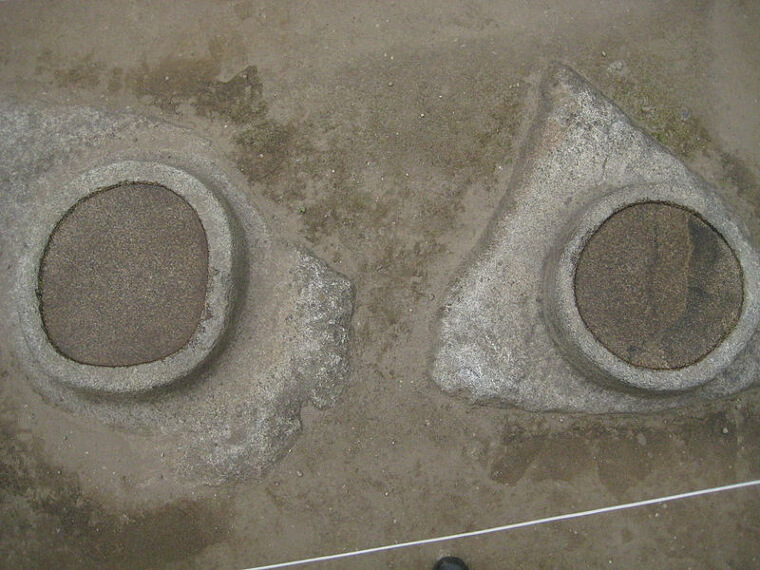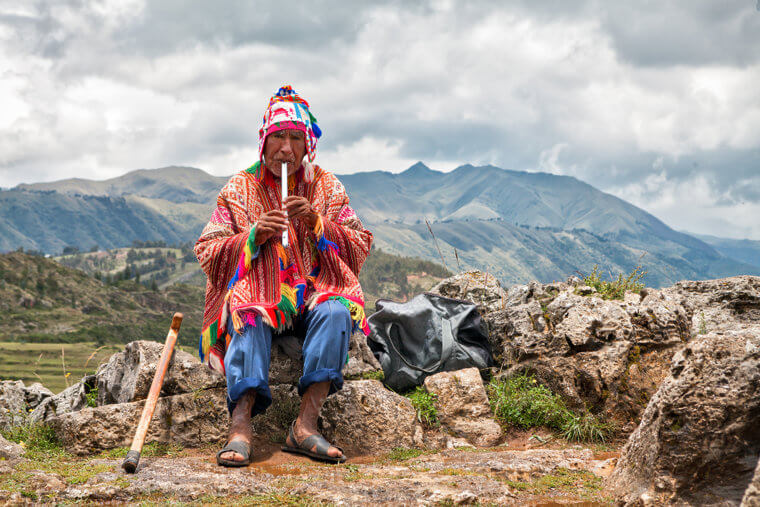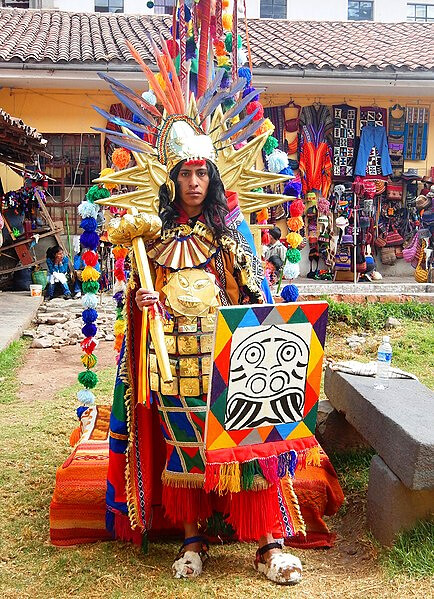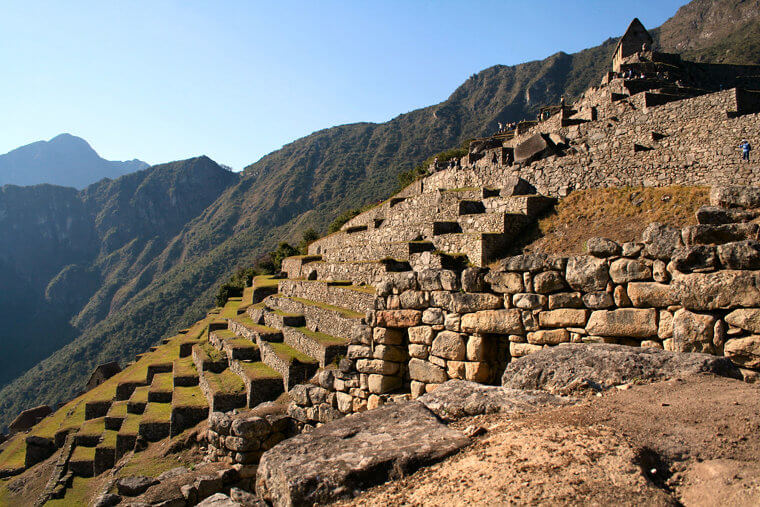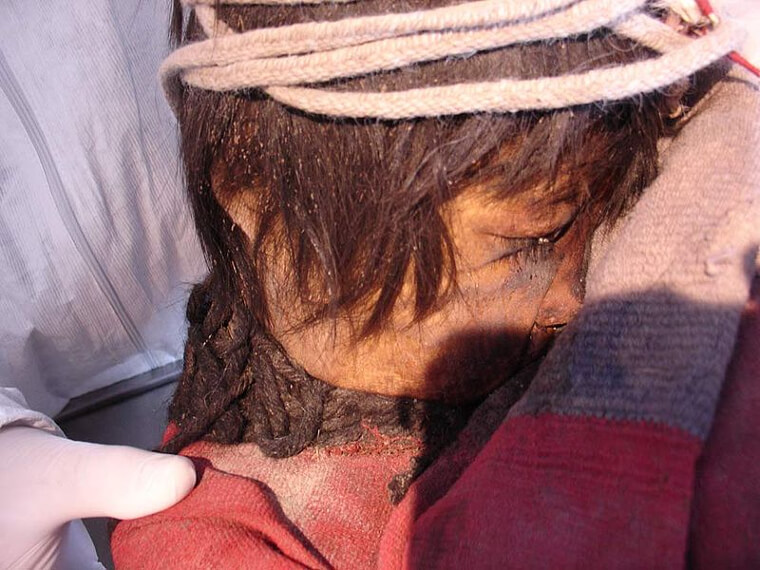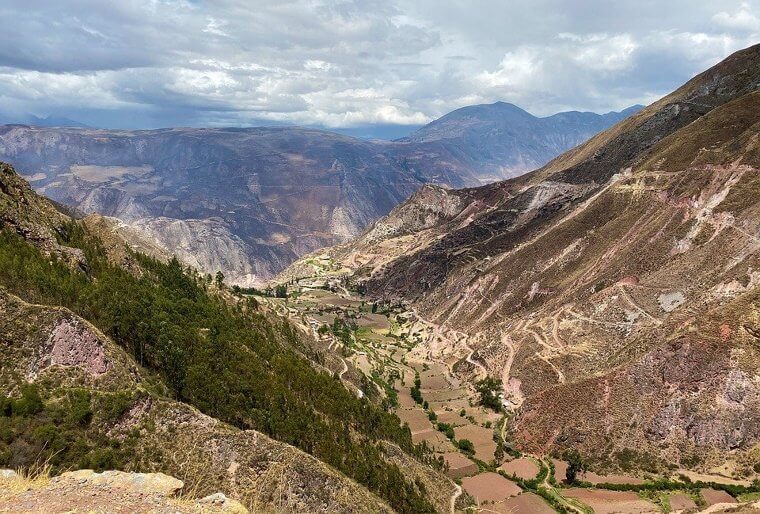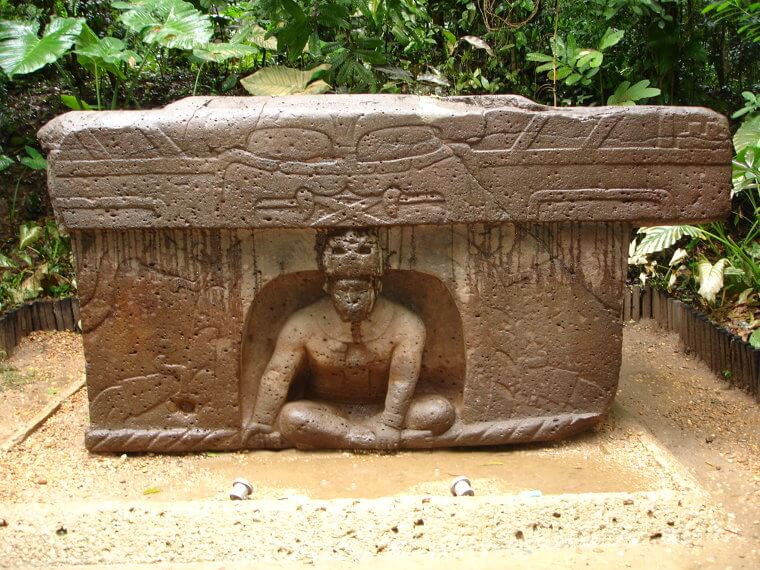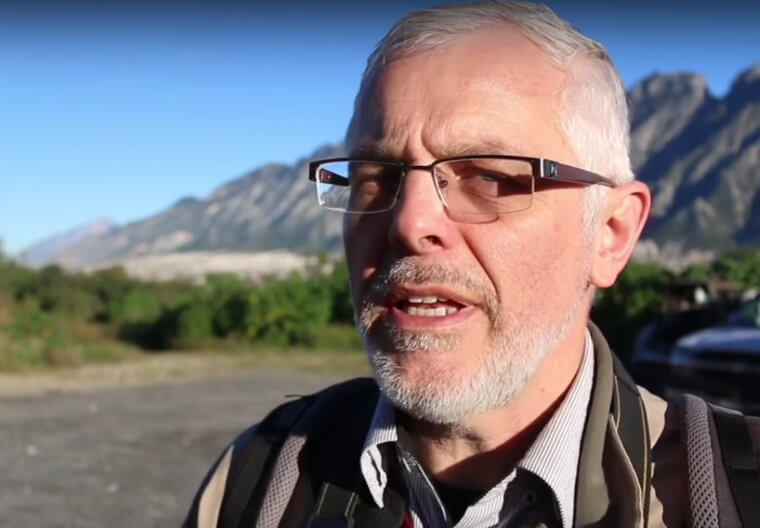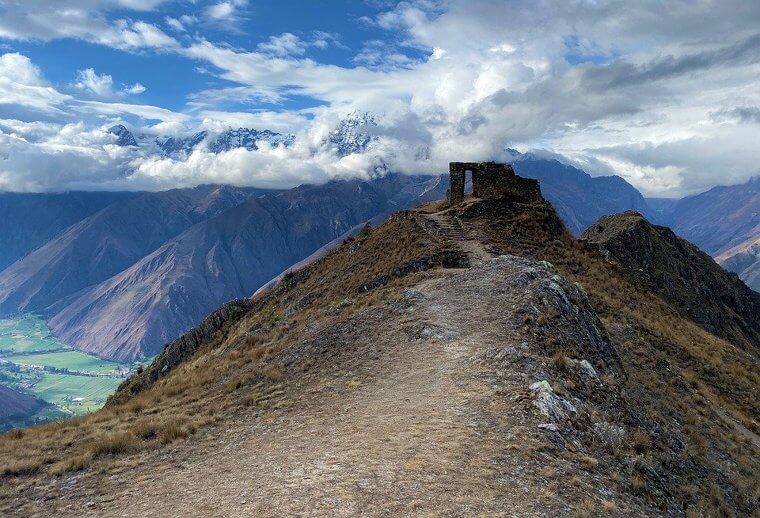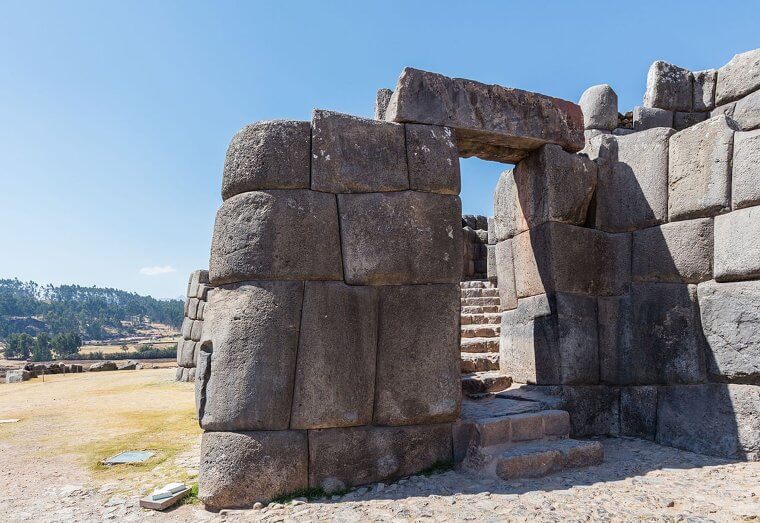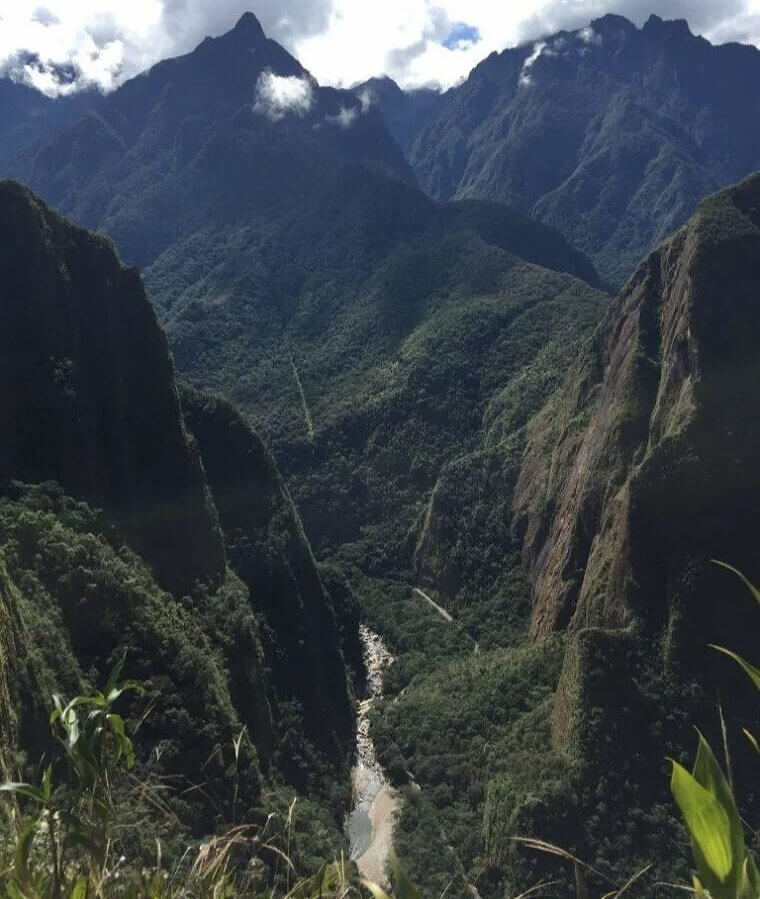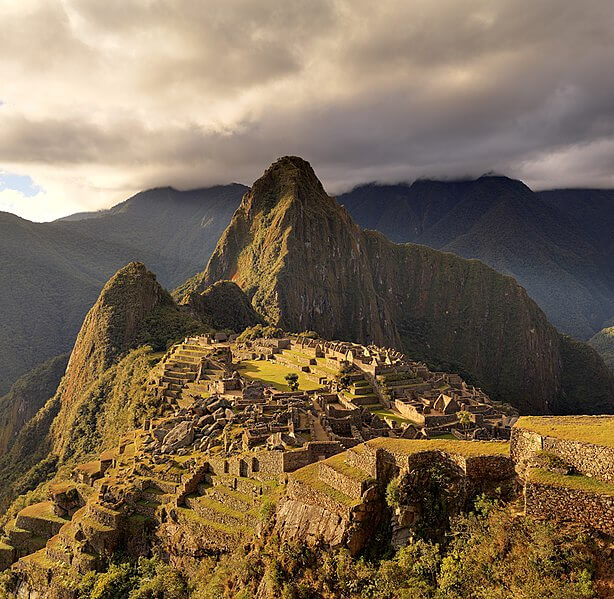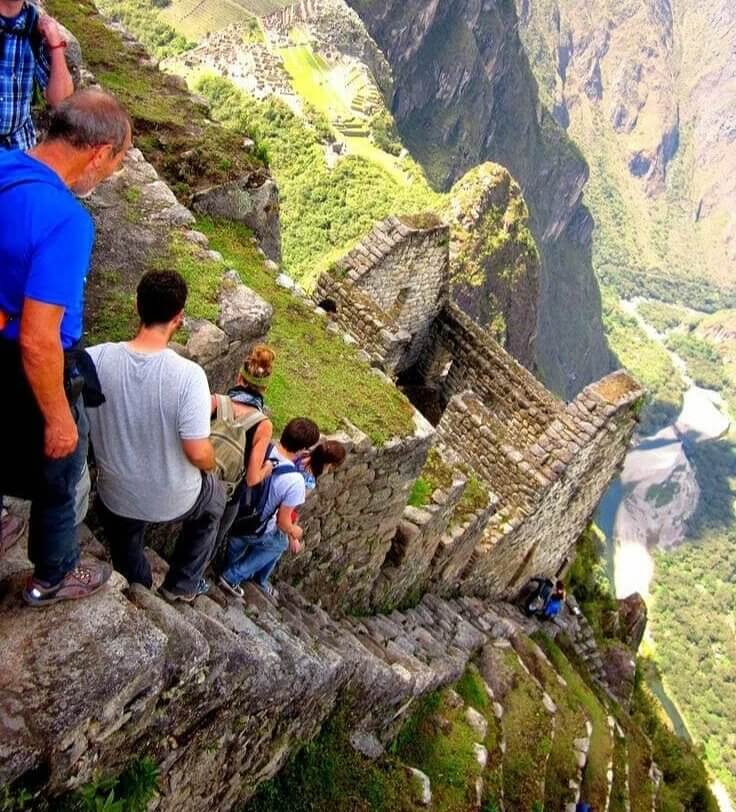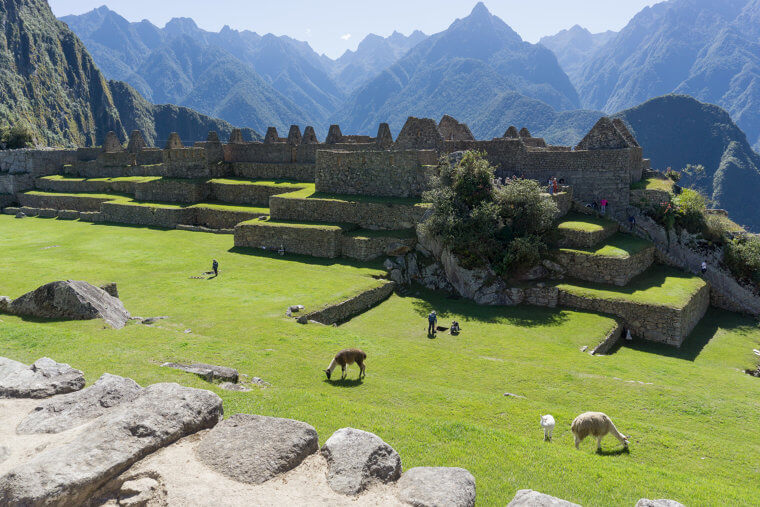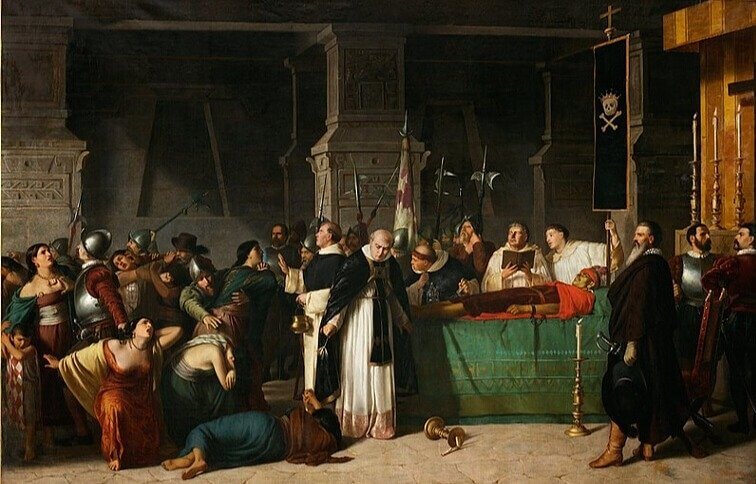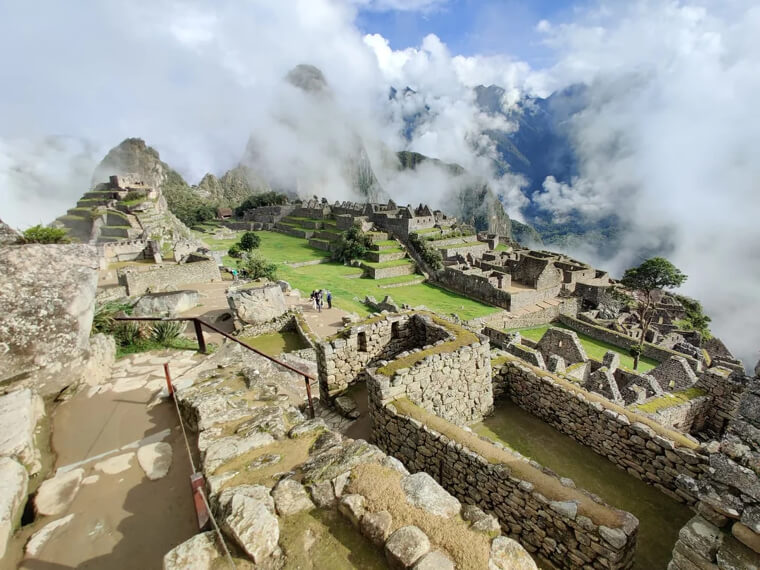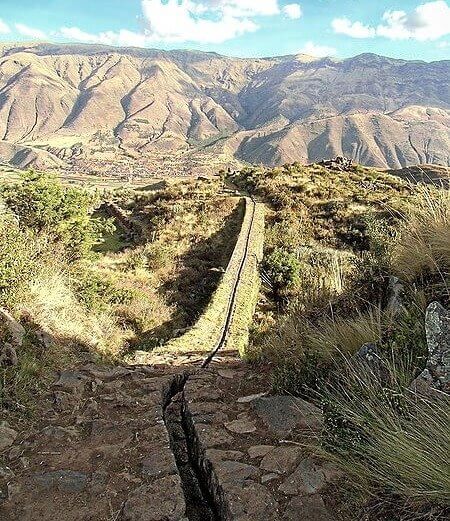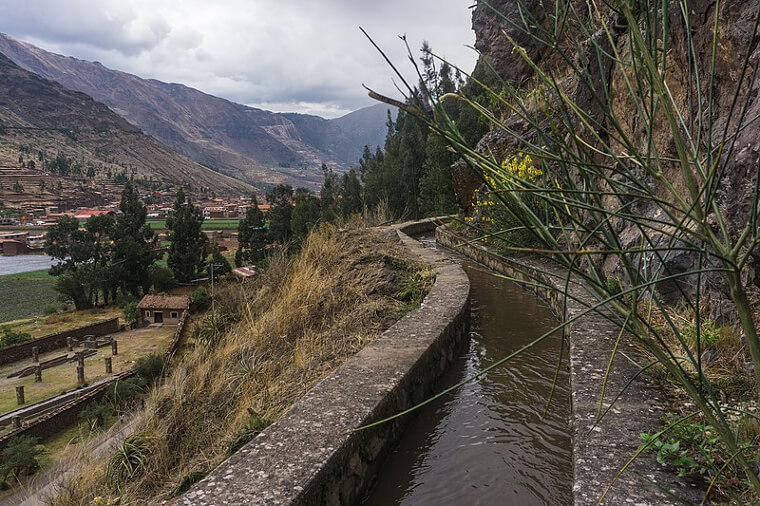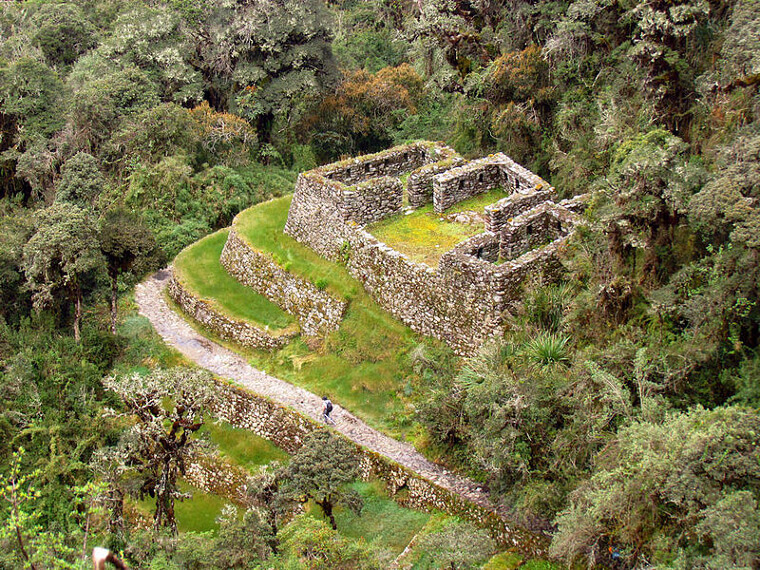Ancient Secrets Await in the Andes
Perched high in the Andes Mountains of Peru, Machu Picchu remains a magnet for global tourists, drawn to its views and dark history. As visitors traverse the rugged terrain, the ancient ruins of the Inca Empire reveal clues about a civilization lost to time. Amidst the famous landscapes, a sense of mystery has remained until today with countless researchers, archaeologists, and tourists alike trying to understand how this historical sanctuary came to be.
What secrets are concealed within the greenery? Buckle up because we are about to unravel Machu Picchu's mysteries from its past.
The Machu Picchu Skyline Is Breathtaking but It Wasn't Always This Peaceful
Travelers have the opportunity to hike to the top of Machu Picchu and reach the skyline. This ancient Inca settlement, nestled in the rugged Andes, remains a part of history that is almost hard to believe actually exists. Its mysterious charm lures explorers from all corners of the world. However, amidst the vistas, there are hidden tales most people don't know. Life within these ancient stone walls wasn't always that happy.
While the area may appear beautiful, its inhabitants from centuries ago engaged in ancient rituals that could make any modern-day individual uneasy.
The Origins of Machu Picchu
In the past, Machu Picchu's origin baffled the world. Despite enduring 80 inches of rain annually, it stood firm on steep slopes prone to landslides and above active fault lines. Surviving over 500 years of weather and earthquakes, the mystery of its resilience intrigued all. Pachacuti, the ruler who founded the Inca Empire, commanded its creation, and the Inca, lacking conventional tools like wheels, iron, or steel, constructed this wonder with their bare hands.
This leaves us to wonder about the secrets buried within the ancient stones of Machu Picchu. Was it sorcery that guided their hands, or perhaps deeper, ancient wisdom?
Machu Picchu Was Hidden Amid Spanish Conquest
Though the Inca civilization once stood tall, their fate was bound to darkness. Francisco Pizarro, a Spanish explorer, and conqueror, swept through South America with a hunger for gold and converts. Against overwhelming odds, Pizarro's men captured the Incan ruler, Atahualpa, in a chilling encounter. The Spaniards' guns and horses granted them power over the existing Incas. As their empire rose, the once-mighty Incan empire faded into the shadows. However, one thing remained untouched, Machu Picchu.
As if it wasn't already a sight that seemed otherworldly or produced from magic, Machu Picchu was never found by the invaders once they took over the area.
The Inca People Disappeared and Left Behind Their Most Prized Posession
In the midst of destruction, Machu Picchu escaped Pizarro's reach. A century after its creation, the Incas fled in fear, leaving the city behind. Allegedly as the Spanish approached, the Incas burned the forest trails, erasing all paths to Machu Picchu. Therefore the secrets of this hidden sanctuary remained safe, and the ruins stood as silent witnesses to the past of the Inca people, just waiting to be rediscovered one day.
It may have been forgotten about and hidden, but soon enough, the truth would be revealed, and the secrets of the Inca people would come to light.
The Hidden Practices of the Inca Were on the Verge of Discovery
Hidden in the depths of an ancient land, a forgotten settlement lay concealed. Then came Hiram Bingham III, a scholar with an insatiable hunger for the unknown. His pursuit of adventure led him on a dangerous path up the mountain, guided only by a Quechua-speaking resident. On that fateful day, Machu Picchu emerged from the shadows, and Hiram witnessed the stonework that hinted at all of the lost stories of the Inca people.
Among the ruins, it had an eerie resemblance to the Temple of the Sun in Cusco, and little did he know that it was once the capital of the Inca Empire. What he uncovered would rewrite history, a tale buried for ages, about to be told.
Hiram Bingham Exposed the Once Lost Inca Empire
In the distant past, ancient records hinted at a hidden city high in the mountains. Many thought it was just a myth, but Hiram Bingham refused to give up. He journeyed through jungles and mountains to find the truth. The Incas worried that the Spanish would loot Machu Picchu, so they kept it a secret. Some believe the Inca disappeared due to wars and plagues, while others think they intentionally vanished, wanting to hide this magical place from outsiders.
What was so important that they had to keep hidden? And now that this was found again, the artifacts that would be discovered would give us a glimpse into a side of the Incas we never knew before.
It Was Time to Stitch the Shadows of the Past Together
In 1911, the explorer's journey to Machu Picchu astonished the world. The abandoned city stood remarkably intact despite the passage of generations. But what he discovered within those ancient walls was even more captivating. Hidden from history's gaze were the Inca civilization's secrets, unknown for ages. How was everything in such good shape? What did this all mean? Hiram was determined to find out and understand the past of this shocking site.
He wanted to know everything and started to discover artifacts, statues, and stones that he knew meant more than he could understand at that moment.
Archaeologists Flocked Here to Discover the Hidden World
With Hiram Bingham's momentous find, Machu Picchu emerged as a wonder of the ancient realm. Yet, when word got out, people were baffled by the mountaintop city's existence. Why did the Incas construct such a hidden citadel? Astonished by its magnificence and the absence of historical records, he grappled with the truth he stumbled upon. Soon, a tide of scholars and archaeologists rushed to this mysterious site, hungry to decipher its secrets.
The "lost city" was about to reveal itself and all of the forgotten secrets of its inhabitants. Were people really ready for this?
The Chilling Rite of Inca Child Sacrifice
A scary practice was discovered in the depths of the Inca civilization. Qhapaq hucha, the sacrificial ritual that claimed innocent lives, predominantly children. Children were considered pure and untainted; therefore, they were mainly selected as offerings during significant events or times of distress. Elaborate preparations began months before their fate, where they were pampered and adorned like royalty. Then they would be led on a long journey to the mountaintops and given a concoction to drink that would intoxicate them.
Then these children would be strangled, struck in the head, or abandoned on the mountaintops to freeze to death.
Terraces Built by Extraterrestrial Beings
Hiram immediately noticed the mountainside covered in these stone terraces. But why were they there, and what was their purpose? Clearly, the Inca people were way ahead of their time and were skilled builders with particular intentions in mind for everything they created. These terraces that cover Machu Picchu were built to collect rainwater and protect the mountain from potentially destructive landslides. Though some claim these were made with the help of extraterrestrial beings.
Plenty of intricate structures along this oasis were perfectly aligned with celestial events, hinting at an otherworldly hand in its creation. What invisible forces truly shaped this mountaintop sanctuary?
Creepy Artifacts of Disfigured People Were Found
As explorers ventured into the depths of Machu Picchu, they stumbled upon plenty of unsettling surprises. Despite around 750 houses, there were multiple sections dedicated solely to rituals. Explorers and archeologists found people buried with all their possessions. There were also dozens of creepy figurines that eerily resembled disfigured human beings, and they were almost always found accompanied by human remains. These finds gave the ancient site a bad reputation.
But as they ventured deeper into Machu Picchu, the secrets intensified, and the things they discovered only got creepier.
Locals Carry Mirrors to Ward off Evil Spirits
As travelers venture deeper into the wilderness, they may encounter superstitious porters responsible for carrying their baggage, who hold some concerning beliefs. As the porters rest on the trail in makeshift tents, fear takes over them. Hidden beneath them lie shiny metal mirrors, an ancient defense against the evil spirits that dwell within the earth. In this remote realm, the staff safeguards themselves from unknown forces; convinced dark spirits could attack them.
Those mirrors are like their secret protection, keeping any creepy spirits from the area far away from them. It adds another element to the already risky trail up the mountain.
They Sacrificed White Llamas to Their God
Inti, the Inca god of the sun, held a prominent place in Machu Picchu's design. His followers, however, resorted to awful tributes. Believing Inti controlled their crops and survival, they appeased him with sacrifices. Among the common offerings were white llamas, food, livestock, and even farmland dedicated to this god. These ancient rituals and sacrifices provide insight into the society of the Inca people and their practices we would otherwise never know.
The act of sacrificing llamas can be quite unsettling so we're just glad this isn't common practice anymore.
A Building Dedicated to Gaurding Machu Picchu
While walking around the ancient ruins of Machu Picchu, one can become confused about the architecture. Unlike any Inca urban design, the settlement's structures defied explanation, and Machu Picchu's layout puzzled experts. Unusual divisions split the stone buildings, and some were clearly not meant for living. A spot that many tourists today stop and take photos in front of is The Guardhouse or the Caretaker's Hut. It was built to serve as a security post.
Though it makes perfect sense to have a security building, other structures discovered were far more eerie, with purposes unknown or linked to rituals.
Unearthing the Secrets of Machu Picchu's Haunting Past
There is no doubt that Machu Picchu is stunning to look at, but why was it there in the first place? People were trying to get to the bottom of what its true purpose was. Historians discovered luxurious residences suggesting they were reserved as a retreat for Inca nobles and a secluded getaway for those who were wealthy and influential. However, other historians theorize it was a sacred religious site, considering the concerning artifacts and human remains found.
As more items were uncovered and people's understanding of Machu Picchu deepened, an unsettling feeling clung to the historians and explorers alike. There were clearly untold terrors and veiled truths waiting to be unearthed.
The Mystery of Machu Picchu's Lost Inhabitants and the Haunting Legacy of Supay
The question of Machu Picchu lay in the vanished souls that once thrived within its walls. How could 750 people simply vanish without a trace? No signs of attack or disaster were found in the landscape of Machu Picchu. Was it really kept hidden that well, and people simply fled? Or was there a darker force at play here? Within this mysterious setting, Supay, the Inca god of death and the ruler of the underworld, played a significant role.
It was once said that the Inca people would invoke and honor Supay, fearing the wrath he could unleash. Just another ancient and terrifying practice that once gripped this sacred land.
They Built Machu Picchu With Their Bare Hands
In the landscape of Machu Picchu, the Incas' extraordinary craftsmanship comes to light. Using fractured rocks, they skillfully constructed walls that have stood the test of time, employing a unique dry-stone technique. The precision of their work leaves us wondering about their methods. Why did they choose such a remote location? How did they achieve such precision? Did they really do it themselves or with the help of something supernatural?
As we dig deeper into the story, uncovering how they pulled off this incredible feat without modern tools only adds to the allure of this ancient citadel.
Ritualistic Sacrifice of Burying Llamas Alive
Frozen in time, the remains of four sacrificed llamas reveal chilling glimpses into the rituals of the Inca Empire over 500 years ago. Archaeologists unearthed these clues, offering a window into the empire's religious and political practices. Bound in sacrifice to welcome newcomers, the llamas, adorned with precious materials, met their eerie fate alongside decorated guinea pigs when they were buried alive. Previously only bones were found, but this time around, fully mummified llamas were exposed.
This tradition of llama sacrifice was not uncommon, with Spanish accounts describing rituals sometimes involving over 100 llamas at a time.
The Chilling Initiation of Boys in Inti Mach'ay Cave
Beneath the Temple of the Sun, the Inti Mach'ay cave holds dark secrets of ancient rituals. Used for the Royal Feast of the Sun during the Incan month of Qhapaq Raymi, this festival spanned till the December solstice. Inside the cave, noble boys underwent a spine-chilling initiation into manhood, enduring an ear-piercing ritual as they watched the sunrise. It was built explicitly with unique tunnel-like windows that permitted sunlight only during the winter solstice.
The atmosphere inside the cave, deprived of light for most of the year, contributes to its ominous feeling. These artificial caves hold significance as a site connected to the worship of Inti at Machu Picchu.
Insights Into the Inca's Cryptic Knowledge of Geology
Within the cryptic ruins of Machu Picchu lies a revelation; did the Inca builders possess an uncanny grasp of geology? While their knowledge of tectonic faults remained obscure, evidence suggests they could spot intensely fractured zones spanning vast distances. Through the eyes of the Incas, we unearth a chilling realization, their ability to read the rocks, foreseeing the secrets of the earth beneath. Was it an acquired skill or a gift from their deities?
How did the ancient Inca people move gigantic rocks by hand, and how did they know where to build and where to avoid? It's been a secret that no one can crack.
The Haunting Rituals of Inca Sun Worship
The Inca culture revered Inti, the Sun, as a crucial deity. Multiple temples dedicated to this celestial entity held sway over every facet of life, from architecture to festivals, even granting the royal family semi-divine status. For 15 haunting days, sacrifices and dances paid homage to the fearsome "Sun God." Though the practices were dark, they adorned themselves in colorful traditional fabrics and garb celebrating their devotion to their deity.
Brace yourself for more haunting rituals and creepy mysteries waiting to be unearthed.
The Ancient Stones Were Carved Defying Modern Tools
Many have been dedicated to unraveling the many mysteries behind the Inca civilization. The fractured rock they used to build was shaped into hexagons and triangles and fitted together seamlessly, revealing the Incas' uncanny understanding of their surroundings. Their materials seemed almost designed to form perfect structures. The fragile nature of the stone allowed for easy cutting and shaping, leaving archaeologists, geologists, and historians baffled at their engineering prowess.
What secrets lay within these enigmatic rock formations, and how did the Incas harness them to create their astonishing empire? Whether by hand or some force that we don't understand, it's spooky just how advanced they were.
A Young Boy Who Was Tied up for Sacrifice
In the dark shadows of Inca civilization, a chilling tradition unfolded—the sacrifice of innocent children. Though it was a part of life in their culture, it's still a creepy practice that is hard to wrap your head around. It was a pretty gruesome practice, like this one boy experience. The Incas showed a young boy who resisted his dreadful destiny with no mercy. With trembling hands, they tied him up and drugged him.
His desperate pleas to be saved remain a haunting part of history and show a dark practice that the Inca people once deemed so acceptable.
The Incas Faced Relentless Natural Disasters
It's hard to believe that the Incas lived on fault lines and regularly put themselves in the lines of fire, from volcanic eruptions to earthquakes and destructive floods! So how did they survive this? Well, historians have pieced together their dark past and compiled some answers. Seeking protection from the harsh living environments, the Incas turned to their gods, forming reciprocal relationships in a desperate bid to survive the unpredictable forces of nature that haunted their world.
This is precisely why when the environment was terrible, lightning struck, or several earthquakes happened in a row, the Incas turned to one haunting ritual- sacrificing one of their own to their Gods.
Grisly Sacrifices Were Common
While walking the haunting grounds of Machu Picchu, chilling secrets were exposed. Concealed within the ancient walls were skeletal remains with signs of grisly acts done to these poor souls. In their quest to appease their gods, the Incas made chilling offerings from humble prayers, food, coca leaves, and woven cloth to blood-soaked sacrifices of animals. But in the darkest of rituals, the ultimate tribute demanded human lives, especially those of children.
The chilling spectrum of offerings painted a haunting portrait of the Incas' desperation to gain favor from the divine forces that loomed over their world.
Machu Picchu Was Built on Tectonic Plates
It was time for Rualdo to uncover the secrets behind Machu Picchu's remote location. He believed the Incas deliberately chose isolated spots for their cities and wondered if there was a hidden reason beneath the ground. Menegat and his team mapped the fractures beneath the ancient city using satellite data and on-site measurements. Much to his prediction, there were fault lines directly below all of Machu Picchu. So why would the Incas build where earthquakes were common?
Centuries of fault line movements produced an abundance of coveted stone, perfect for their construction needs. Without the fractured substrate, this ominous mountain construction would be impossible.
The Inca's Possessed Unearthly Wisdom to Build Machu Picchu
Geologist Menegat's chilling insights leave us pondering the inexplicable knowledge possessed by the Inca civilization. What guided their choice of building settlements in the Andean heights? How did they master the rocky terrains to create cities like Machu Picchu? The uncanny ability to discern rocks and mountains was key to their success, as no civilization could thrive without such mastery. Beyond abundant building materials, the very fractures that provided stones served as ingenious drains, protecting the city from devastating floods during heavy rainstorms.
As the veil of mystery lifts, it becomes clear that the Incas' profound understanding of this sacred land was guided by something beyond mortal comprehension.
The Incas Used Fractured Rocks to Build Machu Picchu
Geologist Menegat's findings point to a chilling revelation about the Incas' strategic construction methods. Cusco, the Inca capital, too, was aligned with the geological faults beneath. Why did they opt for such peculiar building practices? Could ancient superstitions or rituals be at play? Machu Picchu offers clues to the Inca's affinity for fractured rocks and how the fault lines allowed the seamless fitting of stones that provided stability during earthquakes.
These unsettling revelations spark haunting questions - how did their constructions endure centuries atop tectonic plates? Was it the work of a higher power?
Geologist Rualdo Menegat's Quest to Understand the Mysteries in the Andean Mountains
Delving into the shadows of Machu Picchu, geologist Rualdo Menegat seeks to decode the cryptic mysteries of the Inca people. For years, he has tirelessly studied the ancient city, driven by a relentless determination to unravel its haunting construction. At dizzying altitudes, Menegat braved the treacherous Andean peaks, conducting fieldwork amidst the ancient ruins. He wanted to uncover why Machu Picchu was located so high up in the mountains and tucked away.
Rualdo Menegat's hunch was on to something, and he soon revealed the startling truth: Machu Picchu's site was no accident. Deep below the Incan city are tectonic plates!
Miles of Fault Lines Are Right Below the Surface
Beneath the iconic beauty of Machu Picchu lies an inexplicable truth, the ancient city was deliberately built on intersecting fault lines. Geologist Rualdo Menegat's research unraveled a haunting design hidden in the Earth. From fractures to a massive 107-mile-long fault, the exact spot where these faults intersect, the unsettling "X" marks spot is the precise location of no other than Machu Picchu itself. As more information surfaces, Machu Picchu's ominous origins call us to delve into more of its buried secrets.
Did the Incas harness unseen forces, guided by the Earth's power, to create this spine-chilling wonder? Either way, the fact that it is confirmed Machu Picchu is built precisely on the convergence point of the fault lines solidifies the Inca's wisdom was lightyears ahead of their time.
The Incas Knew the Benefits of the Land
There is no way the Incas coincidentally built one of the world's wonders on top of fault lines accompanying active volcanoes and earthquakes. This was an intentional and genius decision that directly influenced the design of Machu Picchu. So in what ways did this benefit them? Well, researchers and geologists alike found some startling evidence that points to exactly why they may have chosen to build on a remote mountaintop.
The fractures beneath the city held secrets, bestowing the Incas with additional benefits. This helped them fit stones together more efficiently and even channel water to the city, allowing for proper drainage.
The Threat of Tourists Ruining Machu Picchu
As 1.5 million eager tourists flock to Machu Picchu each year; a haunting threat looms over this ancient wonder. The heavy footfall of visitors tramples the sacred ground, tearing away at the delicate landscape and leaving behind a trail of litter. Among steep slopes vulnerable to erosion and landslides, the site itself is slowly fading away. Historical stonework and monuments have fallen victim to the actions of irresponsible tourists, prompting unsettling thoughts of what else may have been lost.
As artifacts lay exposed, the unsettling question remains: will anything truly significant be preserved? Will we have this wonder of the world in just years to come?
The Incas Had Abnormal Engineering Skills
The Incas were master engineers, and they achieved astonishing feats without any modern technology. Their impressive road system stretched across thousands of miles, navigating the challenging Andean landscape with precision. It's no surprise that intricate staircases and terraces were discovered all throughout the land, especially the detailed layout of Machu Picchu. How they carved staircases and tunnels through rugged mountains remains a mystery, as it defies explanation without today's tools.
Their ability to construct grand structures using massive stone blocks without mortar leaves us in awe of their advanced knowledge and skill. Even now, we struggle to understand their achievements, making the Incas a strange phenomenon of the past.
Unraveling the Incas' Disappearance
There are plenty of theories surrounding the Incas' sudden vanishing, but a creepy culprit may be to blame. Historians theorize that when there was European contact with the Inca population, it brought diseases from the New World that the Inca people had never encountered before therefore had no immunity against. Machu Picchu faced a sinister smallpox outbreak, and the Incas had no defense or medicine against it, leading to their tragic demise.
With their population vanishing with just artifacts and remains left behind, it leaves us forever wondering about the dark fate that befell this ancient civilization.
Machu Picchu Wasn't the Only City Built on Fault Intersections
Geologist Menegat's research points to another chilling revelation about the Inca civilization. The mysterious Inca cities, Ollantaytambo, Pisac, and Cusco, were strategically constructed on fault intersections, just like Machu Picchu. The Incas ingeniously used the fractured rocks to create tightly fitted walls, lightening the burden of city-building. This means these ancient people possessed an uncanny understanding of the rocks and mountains, transforming them into strategic tools to shape their empire.
The Inca's survival strategy within the Andean landscape is hard to comprehend, and it's clear that Machu Picchu wasn't their only masterpiece.
Their Water System Was Sophisticated for Their Time
Within the embrace of Machu Picchu's ancient walls lies an otherworldly revelation, the Incan engineers possessed an enigmatic mastery of civil engineering. Their knowledge extended to water resources and management, crafting a sophisticated water system that remains functional to this day. Abundant rainfall fell in the area and was collected; then, the spring water was channeled through a canal, delivering life to the heart of the city. It's a feat that is hard to believe!
Besides the harsh weather conditions and sacrifices, the Inca people seemed to make living in the Andean mountains a breeze.
Surviving the Andean Mountains
Amidst the harsh, unforgiving Andean realm, a truth emerged, the Inca civilization thrived in a delicate balance between life and desolation. Geologist Menegat's research revealed an understanding of the fractured landscape. In these rare oases, where water dripped through the earth's scars, the Incas found refuge. With uncanny precision, they harnessed the hidden lifeblood coursing through faults and fractures, weaving a network of settlements in the inhospitable terrain and making it hospitable.
In the shadows of the Andes, who knew a whole civilization survived and thrived in nature's most intense conditions.
The Land Could've Flooded but Didn't Due to Some Mysterious Forces
Beneath Machu Picchu, the fractured rock held a secret that benefitted the Inca empire. Amidst the lofty Andes, where heavy rains threatened, the geology itself acted as a natural drainage system, safeguarding the site from devastating floods. This hidden feature may have single-handedly preserved the city, keeping it from descending into further ruin after abandonment. It seems the area just happens to be perfectly guarded by nature or Inca gods.
The Incas are lucky that the land would drain and even provide them with water. Otherwise, the entirety of their town and creations could've collapsed.
The Inca Civilization's Subterranean Protection
Another fascinating revelation discovered from the depths of Machu Picchu by Geologist Menegat emerges. His research uncovered the hidden secret behind the sanctuary's survival. As he delved into the ancient city's construction, he found that two-thirds of the effort went into building subsurface drainage. The fractures beneath the surface provided assistance, preserving the site against the ravages of time. Their survival wasn't just luck but the earth working perfectly with them.
The Inca civilization, it seems, thrived on a foundation of fractured rocks, entwining the mysteries of the earth with their empire's destiny.

